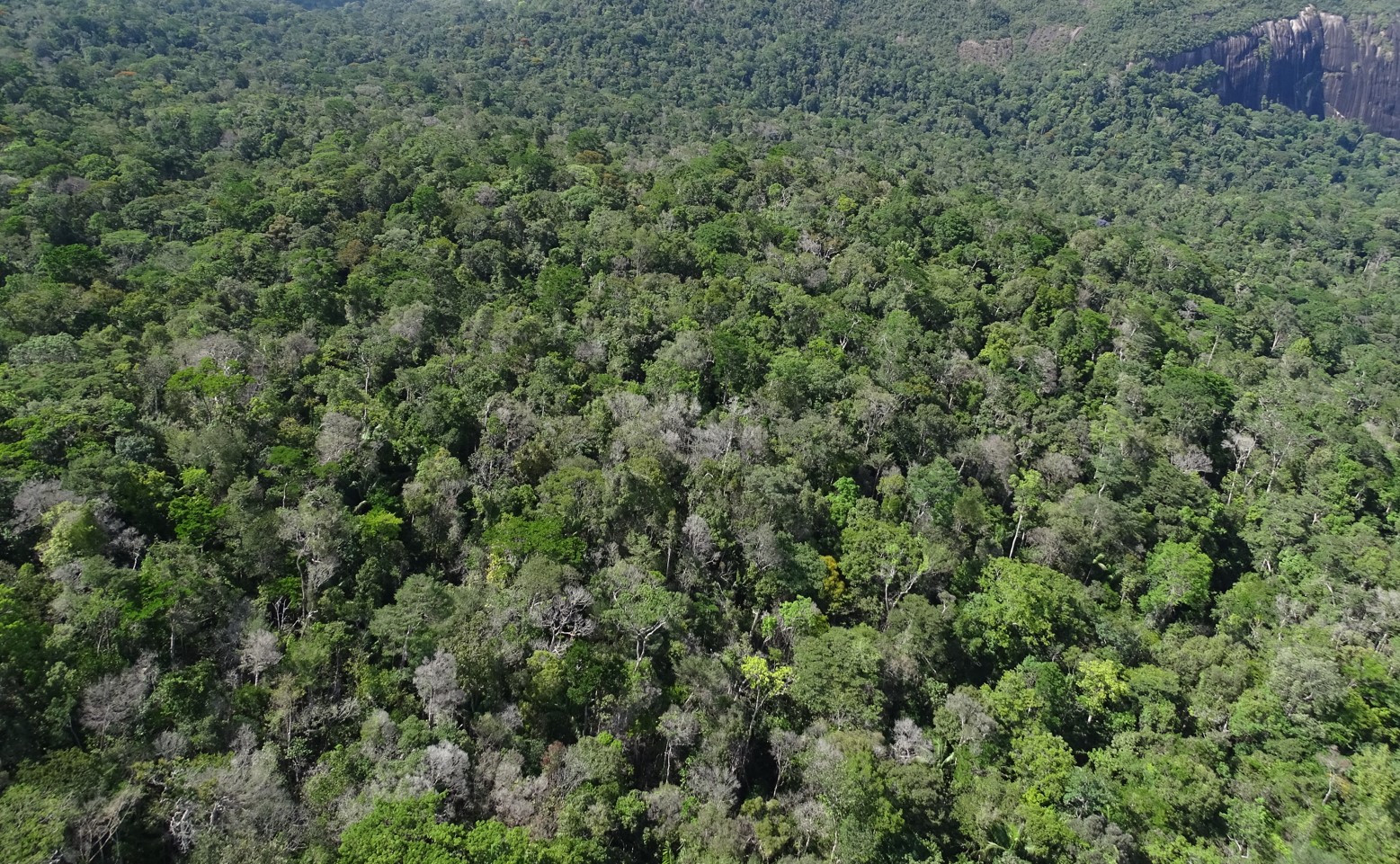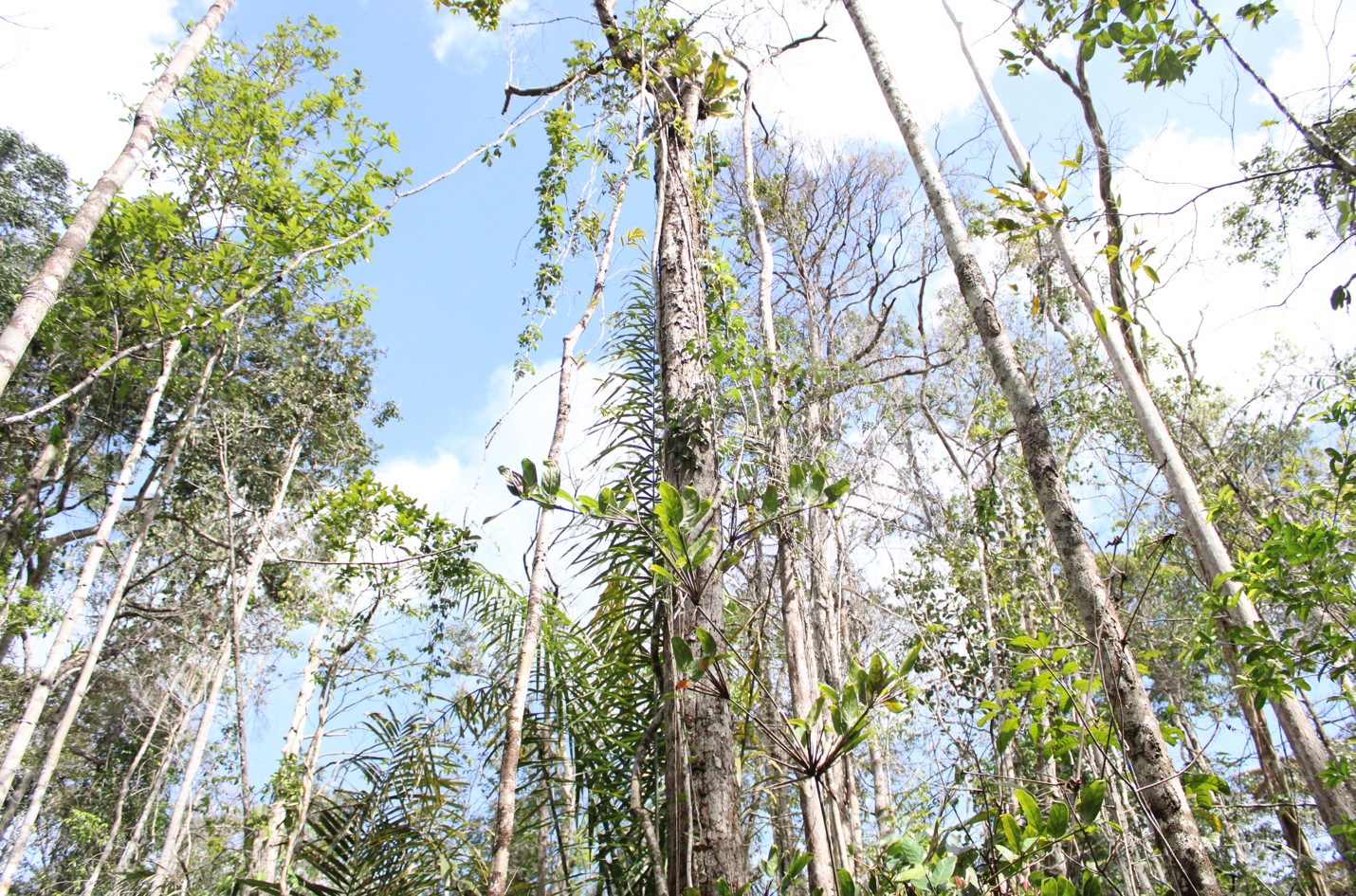Lors d'une mission en novembre 2022, des zones de défoliation de la canopée avaient été notées sur les plateaux d'Aya. Les symptômes observés étaient des défoliations importantes de la canopée toutes essences confondues par patch, un sous-bois très clair avec la lumière incidente arrivant directement au sol, et à l'extrême des palmiers de sous-bois "grillé" et la présence de sol nu. S'agit-il d'un effet de la longue Niña avec l'engorgement prolongé de sols contraints ? Le signalement a été fait aux services USN et SIG de l'ONF avec en retour des constats d'observation du phénomène sur les images Sentinel2 et la découverte d'autres secteurs impactés lors de mission de surveillance héliportée (Lucifer Dékou-Dékou, Absinthe, Montagne de fer).
Afin d’étudier le phénomène depuis le sol, une mission de terrain a été menée en avril 2024 à Aya. Munis de casques et enjambant d’importants volis, l’équipe de cinq personnes a monté et suivi un premier protocole expérimental alliant botanique, inventaire forestier, description et pédologie.
Les premiers résultats ont permis de confirmer qu'il s'agit bien de dépérissements forestiers et non de "simples" défoliations. Les peuplements touchés présentent de forts taux de mortalité (36 % en moyenne et jusqu’à 76 % localement). Les données recueillies suggèrent également que certaines essences sont plus résistantes que d’autres au phénomène. Afin de confirmer ces tendances, d'autres missions supplémentaire sont prévues, probablement secteur Absinthe, particulièrement touché en ampleur et intensité. En parallèle, l’ONF travaille à une cartographie fine du phénomène (surfaces touchées, suivi dans le temps, …).


Dépérissement forestier dans le secteur d'Aya © Alexandre David & Hélène Richard
During a mission in November 2022, areas of canopy defoliation were noted on the Aya hills. The symptoms observed were significant defoliation of the canopy, all species combined, in patches, very light undergrowth with the incident light reaching the ground directly, and at the extreme, palm trees with "burnt" undergrowth and bare ground. Could this be an effect of the long Niña, with the prolonged waterlogging of constrained soils? The phenomenon was reported to the ONF's USN and GIS departments, which in turn observed it on Sentinel2 images and discovered other affected sectors during helicopter surveillance missions (Lucifer Dékou-Dékou, Absinthe, Montagne de Fer).
To study the phenomenon from the ground, a field mission was carried out in Aya in April 2024. Equipped with helmets, and stepping over large volis, the five-strong team set up and followed an initial experimental protocol combining botany, forest inventory, description and pedology.
Initial results have confirmed that this is indeed a case of forest dieback and not "simple" defoliation. The stands affected show high mortality rates (36% on average and up to 76% locally). The data also suggests that some tree species are more resistant than others to the phenomenon. In order to confirm these trends, further missions are planned, probably in the Absinthe sector, which is particularly affected in terms of extent and intensity. At the same time, the ONF is working on a detailed map of the phenomenon (areas affected, monitoring over time, etc.).



